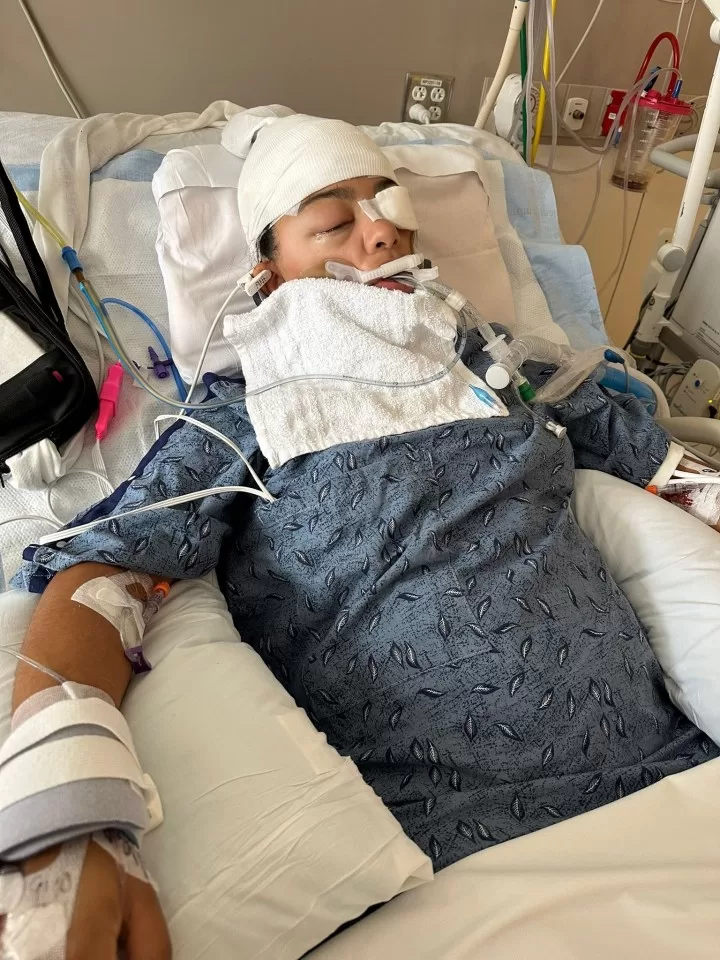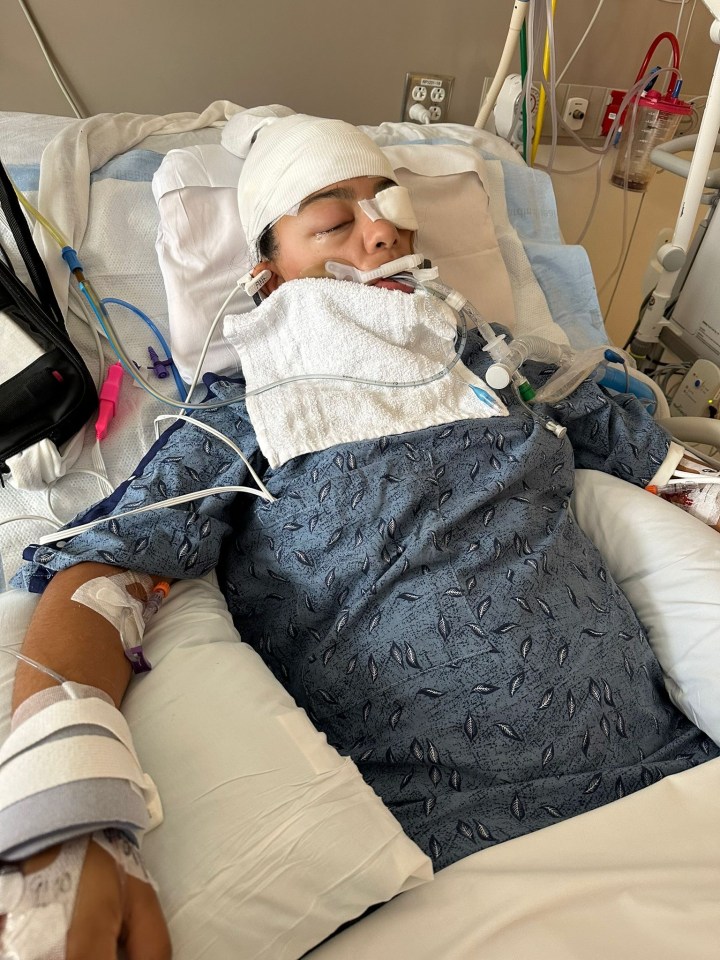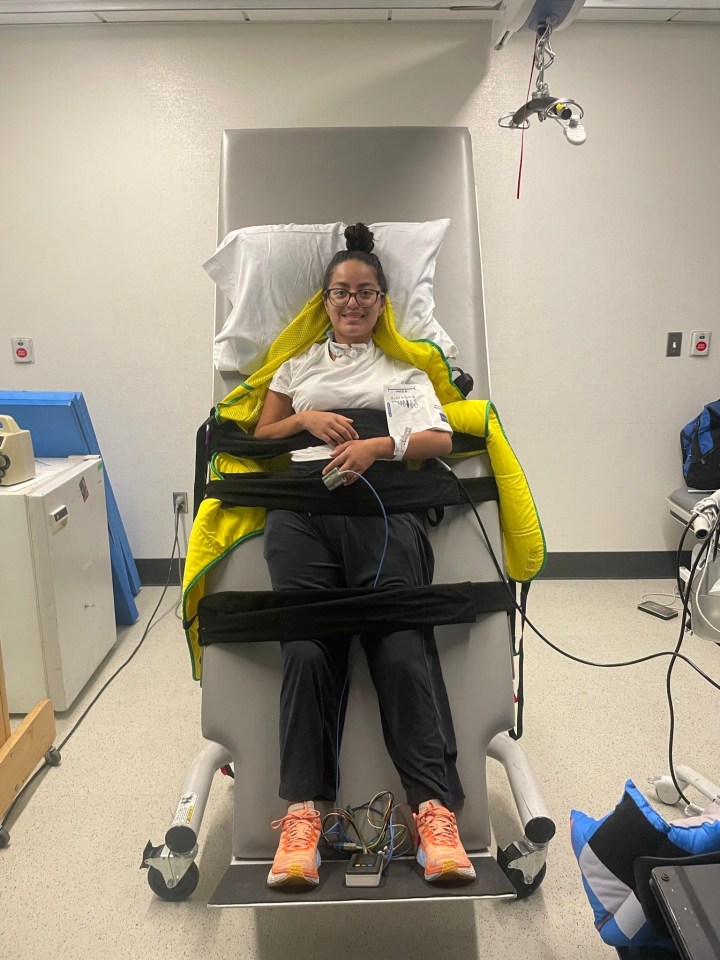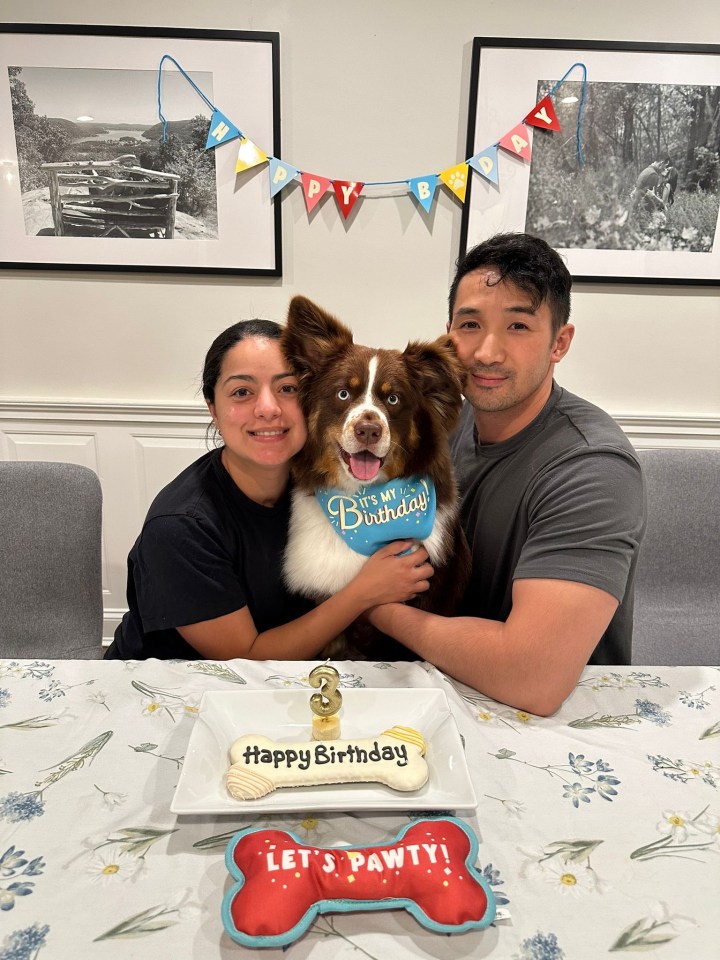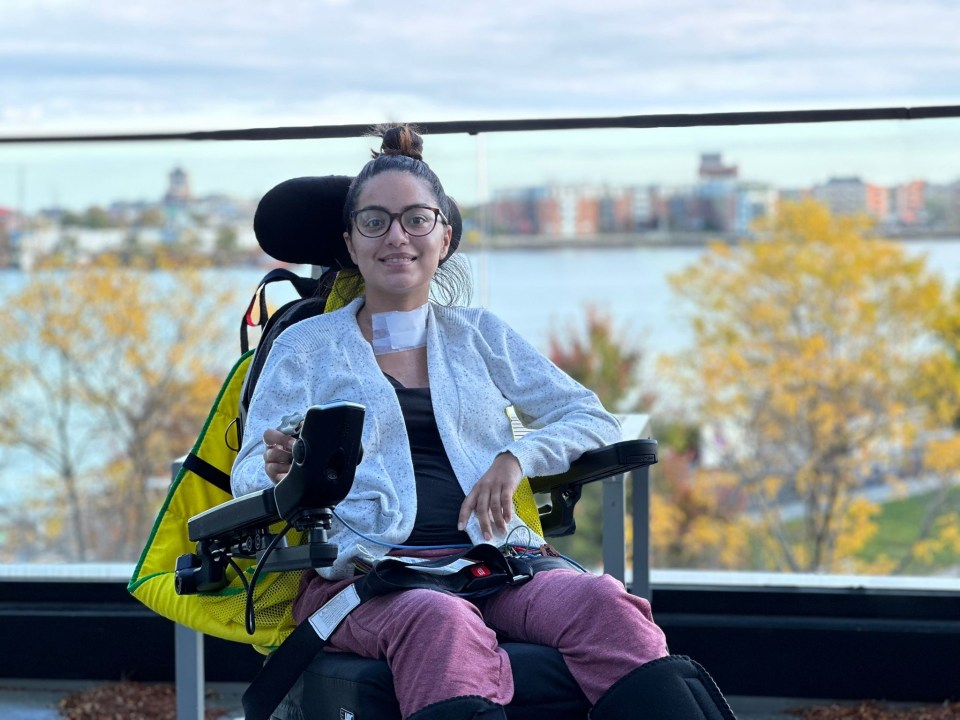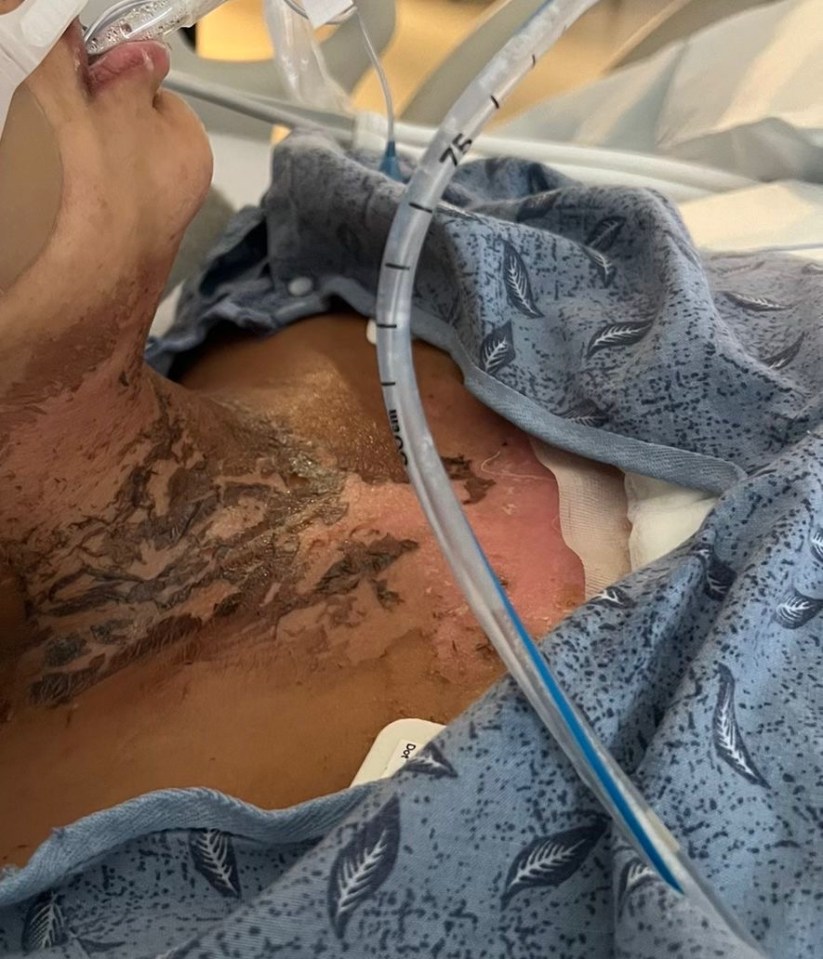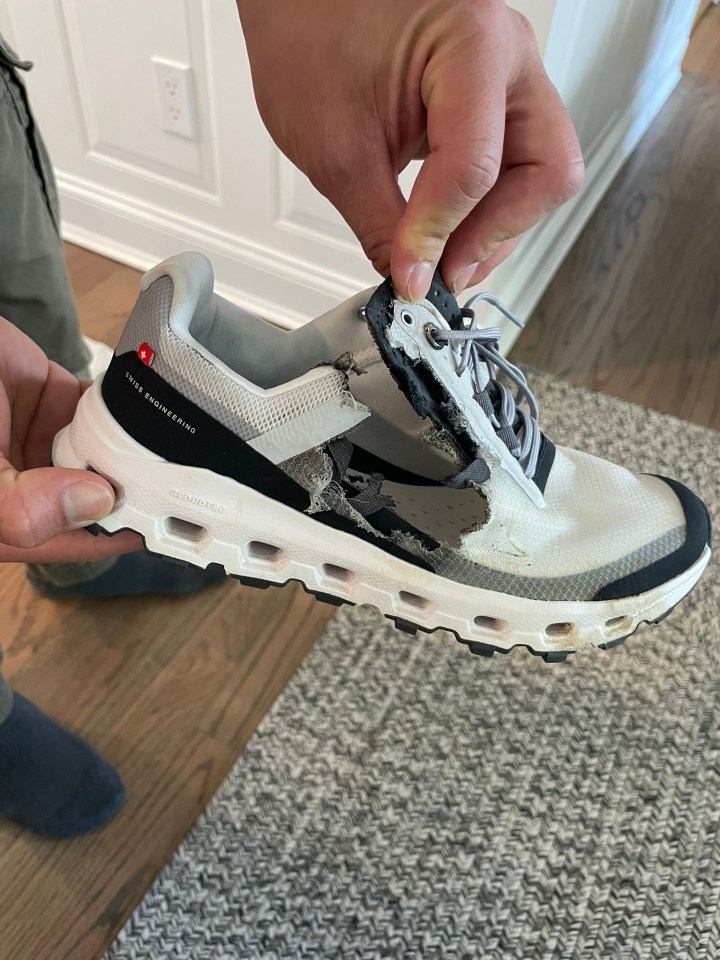AS Thalita Teixeira strolled along the beach with her dog Bruce, the sun was shining and she was in a world of her own.
Until all of a sudden the clouds began to roll in and darkness fell on the 32 year old who had just finished a gruelling three-day, 12-hour shift as an intensive care nurse.
And what happened next is astonishing.
Thalita, who lives with husband Joel Padilla, 35, in Norwalk, Connecticut, was struck by lightning and here, in an exclusive interview with ANNA ROBERTS, she tells her startling story…
THE memories of that day will never leave me – a day which left me with temporary paralysis and feeling extremely lucky to have survived.
The weather was nice, the sea was full of swimmers, and sunbathers relaxed on the shore of Savin Hill Beach, near Boston, USA.
Then – as if from nowhere – clouds started rolling in and sunshine was replaced with drizzle as a storm began. I quickly headed back to my car, parked nearby.
“That’s a cute dog,” said a woman as I passed.
It’s the last thing I remember before waking up in hospital four days later.
I’d been struck by lightning directly to the chest and it was remarkable that I’d lived. The odds of surviving a lightning strike are one in 71 million.
I’d gone into cardiac arrest – which just 7.8% of people survive outside a hospital setting – and was robbed of oxygen for 17 minutes.
Death was an intense blackness
I was temporarily paralysed for two months and now a year on I still can’t walk properly.
I suffered severe burns to my chest and spine which had destroyed the nerves in my body.
I’ve had to relearn simple things such as putting my hair in a bobble and bathing myself.
Even going to the toilet was agonising.
Somehow I not only survived, but I’ve adjusted to life after the strike despite being diagnosed with a traumatic brain injury.
All I can remember of my time on the beach is an intense blackness descending over me – I’m told I flat lined for almost 17 minutes.
Doctors have called me a “miracle” and I think I am – but recovery has been a long and gruelling process.
What is a cardiac arrest – and how to give CPR
THALITA was so lucky – as cardiac arrests outside hospital are almost fatal everytime.
Experts want the public to learn life-saving CPR.
Analysis of out-of-hospital cardiac arrests in England by the University of Warwick Clinical Trials Unit found fewer than one in 12 patients (7.8 per cent) survive to 30 days.
Judy O’Sullivan, director of health innovation programmes at the British Heart Foundation, said: “These figures lay bare the worryingly low survival rates following an out-of-hospital cardiac arrest, and show that too many opportunities to help save a life are being missed. We need to change this.”
Members of the public performed CPR in more than 70 per cent of cases but used a public-access defibrillator in fewer than one in 10 cases. Both figures represent an increase from 2021.
A sudden cardiac arrest is the immediate loss of all heart activity.
It can occur due to an irregular heart rhythm or other heart disease but can strike unexpectedly, too, as in her case.
Breathing stops and the person becomes unconscious, with the lack of oxygenated blood to their organs leading to death.
CPR can help pump blood around the body until specialist help arrives.
The use of a defibrillator can shock the heart to restart – but not enough people know they can access them in public places.
The 2022 figures, based from all of England’s ambulance services and shared with the PA news agency, found ambulance services performed resuscitation in 34,407 patients in England following an out-of-hospital cardiac arrest.
Two thirds of cardiac arrests happened in men, around 80 per cent occurred in people’s homes and 13 per cent in a public place, and the average age of the patient was 65.
A quarter of patients had their hearts restarted by the time they reached hospital but fewer than one survived a month, which is a slight drop on 2021 data.
A previous survey has suggested Brits believe there is a 50/50 chance of surviving a cardiac arrest.
HOW TO GIVE CPR TO AN ADULT
Check for a response. Firmly shake the person’s shoulders and loudly ask if they’re okay.
Call 999. If the person is unconscious and not breathing, or not breathing normally, start CPR.
If there is someone with you, ask them to find a defibrillator [the 999 call handler will tell you where to find the nearest one].
Start chest compressions.
- With the heel of your hand in the centre of their chest, press down smoothly and firmly at a rate of two per second. Try pushing to the beat of Stayin’ Alive by the Bee Gees.
Use a defibrillator as soon as you can. Follow its instructions carefully while you continue to give CPR.
The woman who complimented Bruce described me as “lighting up from the inside out like an X-ray” which is quite an image.
She, and others, called the emergency services and I was taken by ambulance to intensive care at Boston Medical Center, in Massachusetts.
Once there, I was placed in an induced coma to give my brain a chance to recover.
Medics called my husband Joel, he also works in intensive care, and he raced to my bedside. He was horrified – no one expects their wife to go out for a walk and not return home.
When doctors told him the lightning had burned my chest and spinal cord from the inside out, he was stunned I was still alive.
Burnt alive
The strike came into my body near my breast plate, ricocheted down each of my vertebrae, burning me inside out.
It exited my right foot.
My brain swelled, my kidneys were failing, the lighting gashed my stomach and caused cuts down my right leg before it left my body.
For the first three weeks Joel sat by my bedside day and night, frantic with worry, before I was slowly woken up and found myself still intubated, unable to speak or move and ravaged with pain.
Sunk into a depression
Learning details from that day sent me into a deep depression. Questions echoed through my mind. Why me? Why hadn’t I died? Would it have been better to have died?
Recovery was slow and incredibly difficult, both mentally and physically.
Several times my family and friends didn’t think I was going to make it through the night. For two months I couldn’t eat properly. It took another month before I could speak properly.
The bolt had also made me partially deaf. The thunder strike and the power of the lightning hitting me blew my right ear drum.
Deaf, burnt and in agony
For the first three weeks I was breathing through a tube, I could only move a finger and could barely hear. The breathing tube was then removed and replaced with a tracheotomy.
I couldn’t move my arms or legs and was only able to lift a finger. But after 40 days I started intensive physical therapy.
That was really tough.
I would weep in pain as I suffered through but the desire to go back to the old ‘me’ kept me going.
When I realised I couldn’t do simple things like brush my teeth or send WhatsApp messages without being in constant pain, I felt like screaming – but of course couldn’t.
But I pushed on thinking ‘I survived a lightning strike… I can survive this.’
My injuries were so extensive and so rare doctors were stumped. Normally if you have a lightning strike to the chest you die instantly because of cardiac arrest.
A new reality
I was, basically, ‘Patient Zero’ – the first of a kind – and so my treatment plan was a case of trial and error.
I would dream of being a nurse, doing the rounds, helping people, and wake up and realise my reality. I hated it.
But it also made me stronger – and I grew braver as the months went by and I started to learn to hear and speak again, albeit partially.
Physical therapy experts insisted I build up my upper body strength because I was in a wheelchair. Then we focused on my legs.
It was during my rehab stay I started to learn more about what happened on the day it happened in September last year.
No one else was struck and Bruce escaped his lead as it got burned. He ran away terrified by the sound of the strike.
Beachgoers found him half a mile away and to this day he will refuses to go out in the rain.
A second chance at life
Eighty days after I was hit I started outpatient rehabilitation five days a week.
Now, a year on, I’m in a wheelchair 70% of the time and use a walker to get around when I can.
I haven’t been able to work and know it’s still a long road to go. Next month I have an operation to try and repair the blown left ear drum so I can hear properly.
Being an ICU nurse at Beth Israel Medical Centre in Boston was my life. I’m still trying to work out how long the recovery will take and if I will be able to be properly independent again.
I suffered PTSD from the pain. There were times I told my parents I wished the lightning had killed me.
Without the work of the ICU team, Joel’s support and an amazing spinal injuries group I joined I would be dead.
I discovered I am a fighter. I am stubborn and can work through the worst pain imaginable to relearn a basic task like tying my own shoes.
This is my second chance at life – and I’m going to grab it.
